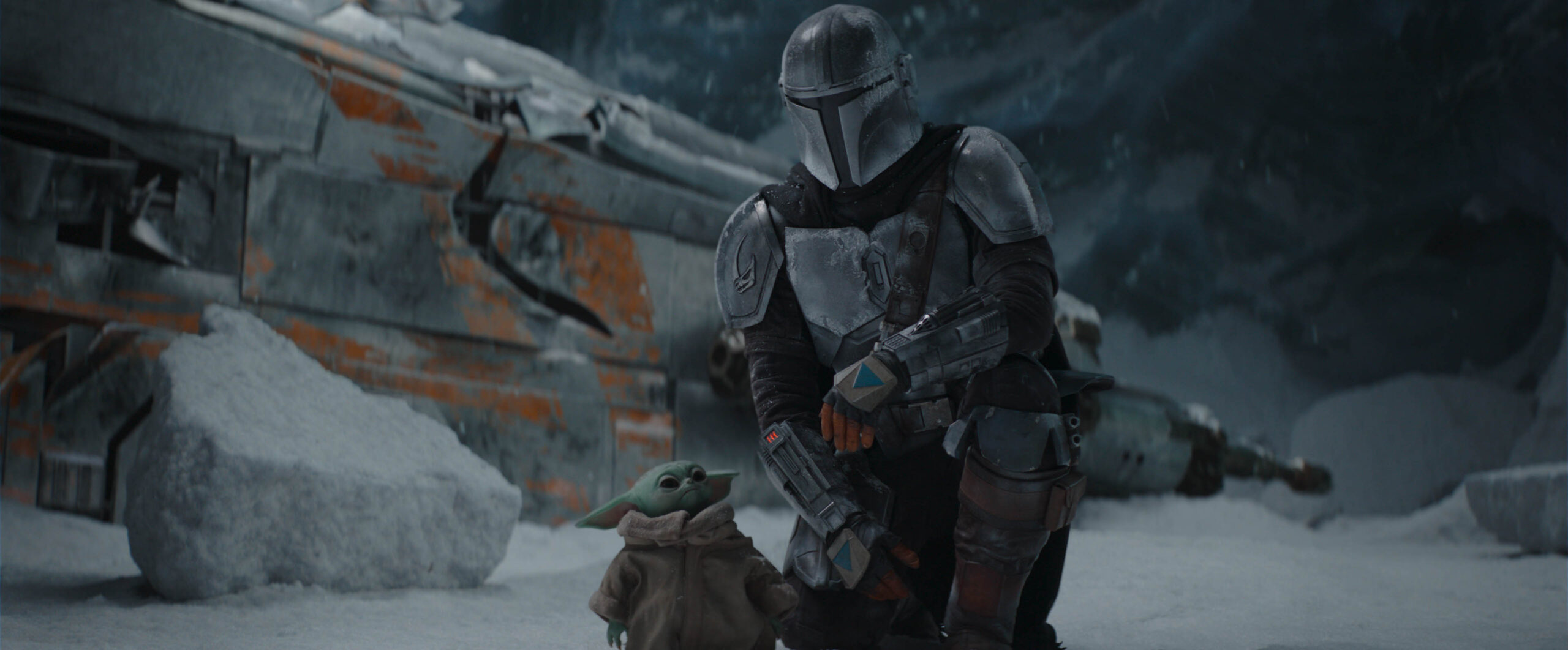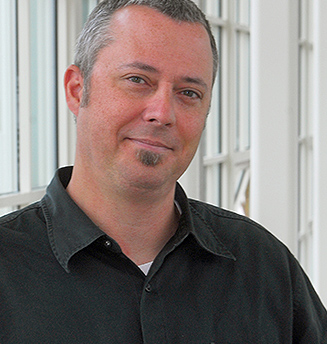Lucasfilm’s “The Mandalorian”, season two, exclusively on Disney+ © 2020
Lucasfilm Ltd. & TM. All Rights Reserved.
On Friday, 13 August, the SIGGRAPH 2021 conference hosted a team from ILM for the Production Session “ILM Presents: The Visual Effects & Virtual Production of ‘The Mandalorian’”, followed by a one-hour Q&A with the panelists. Despite all that time, the rapt audience was left with a handful of unanswered questions. Fortunately, the team was gracious enough to give even more of their time by answering those remaining questions. Continue reading for even more insight from season two of “The Mandalorian” from session panelist Hal Hickel (animation supervisor, ILM).
Q: Are the CG sequences always produced before you shoot with the live actors? These sequences all seem pretty complex, involving a lot of physics sims; any particular challenges getting the actors to react to the CG? —@IsabelLupiani
A: Hello, Isabel. The shots that contain big VFX such as complex sims (water pouring off the Razorcrest after it’s been pulled from the water, or the sand flowing off of the Krayt Dragon, for instance) are tackled in post-production. What is typically created before shooting starts, and displayed in the Volume, are environments. Whether it’s the ice planet in the very first episode of season one, or the junkyard in the next to last episode of season 2, that’s the sort of thing that’s typically created for the Volume. These environments can have some animation in them (moving smoke, background extras, etc.), but they don’t generally contain complex VFX elements.
Q: About the ice spiders … were the background ones procedurally animated? — @malducin
A: Hi @malducin! I asked Image Engine about their process with regard to the deep background spiders, and the answer was that while a procedural approach was investigated (and used a bit on the very largest shots), generally the background “crowds” of spiders were achieved through a more traditional process. Meaning: hand animated, walk/run cycles that then feed into the shots via some flavor of crowd pipeline to choreograph their paths. Foreground hero spiders would be bespoke animation per shot in most cases.
Q: Last year, you mentioned you’d done a few early experiments with digi-doubles inside the volume load. Looks like there were a couple inside the junkyard set, maybe some others, too. Does Helios make that strategy more of an option going forward? —@Carter Burr-Kirven
A: Hi Carter! There were no digital extras in the junkyard environment. The only digital character in that scene was the security droid (and the “Scrapwalkers” in the distance were traditional stop-motion animation by Tippett Studio!). That said, we’re definitely going to be doing more digital extras in the Volume going forward.
Q: Does the volume production environment reduce improvisational moments? —@SherVFX
A: Hi! On the contrary, the Volume encourages on-set exploration of blocking and camera angles. Stages that are all blue/green screen can hamper the improvisation/exploration of camera angles, because you don’t have an environment to frame up on. Whereas being on the Volume is like being at a real location. It inspires new camera angles, new blocking, etc.
Q: Was “Dune” a reference for the movement of the sand and behavior of the Krayt dragon? —@ckwock
A: Hi! If you mean the 1984 “Dune”, not really because it didn’t feature the “liquifaction” concept in the sand movement (though there are some spectacular shots in that film). If you mean the 2021 “Dune”, also no, because there was no imagery from that film made public when we were working on the Dragon scenes.
The full Q&A with Hickel and team was not recorded; however, SIGGRAPH 2021 registrants can still access ILM’s Production Session and others on-demand through 29 October. Not registered? Sign up today to catch all of the incredible production insight shared during the conference.
Hal Hickel, animation supervisor, joined Industrial Light & Magic (ILM) in 1996 as an animator for “The Lost World: Jurassic Park”. His special interest in animation lies in the challenge of integrating fantastic characters and creatures into live-action films. In 2000, Hickel moved up to animation supervisor, teaming up with multi-Academy Award®-winning visual effects supervisor Dennis Muren on Steven Spielberg’s “A.I. Artificial Intelligence”. In 2007, his work on “Pirates of the Caribbean: Dead Man’s Chest” was recognized with both an Academy Award for Outstanding Achievement in Visual Effects and BAFTA for Best Achievement in Visual Effects. Originally from Portland, Oregon, Hickel studied film graphics at the California Institute of the Art before being hired by Will Vinton Studios as a clay animator and motion-control operator for commercials and television specials featuring the California Raisins, among other characters.




